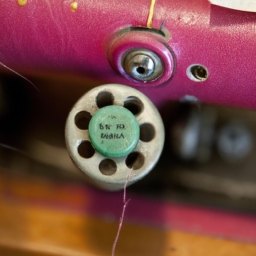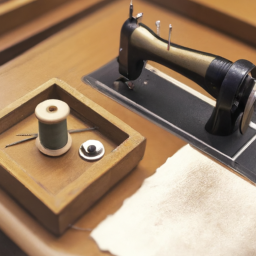
History of Hand Sewing
Sewing, an essential craft and skill, has been practiced by humans for thousands of years. With the invention of the sewing needle and the use of threads, ancient civilizations sewed together pieces of fabric, furs, and other materials to create garments, shelter, and decorative items. The history of hand sewing is a testament to human creativity and resourcefulness.

The earliest evidence of hand sewing dates back to prehistoric times. Archeological findings have unearthed bone needles with eyes, believed to be the first form of needles used for sewing. These needles were primarily made from animal bones, antlers, or thorns. Animal sinew or plant fibers were used as threads. Ancient Egyptians, Greeks, and Romans also employed sewn clothes, linens, and tapestries as part of their daily lives.
During the Middle Ages, European civilizations placed significant value on handmade textiles. Sewing techniques became more refined, and guilds were established to maintain quality standards. Embroidery and decorative stitching gained popularity, showcasing intricate designs and patterns.
“A stitch in time saves nine.”
The Renaissance period brought further advancements in sewing. Women’s fashion during this era featured elaborate garments with intricate lacework, pleating, and embroidery. Tailoring, which involved shaping and fitting clothes, became a distinct profession. Sewing techniques were closely guarded secrets, passed down through apprenticeships.
In the 18th and 19th centuries, industrialization revolutionized the entire textile industry. Sewing machines were developed, replacing much of the hand sewing labor. Although machine sewing became more dominant, hand sewing maintained its significance in couture and bespoke tailoring, where attention to detail and precision were paramount.

In modern times, hand sewing has evolved into a form of artistic expression. People continue to sew by hand, not just for practical purposes but also for personal enjoyment and creativity. Embroidery, quilting, cross-stitching, and other handicrafts have gained popularity as hobbies or artistic endeavors.
Today, there is a renewed appreciation for the history and tradition of hand sewing. The artistry, skill, and dedication that go into creating handmade textile works are admired and celebrated. Hand sewing allows individuals to connect with ancient craftsmanship while adding their unique touch to the rich tapestry of sewing history.
Whatever the future may hold for the world of sewing, the history of hand sewing will always remain a testament to human ingenuity and the timeless art of creating with a needle and thread.
“Sewing is not just about stitching fabric – it’s about weaving a story with each thread.”




